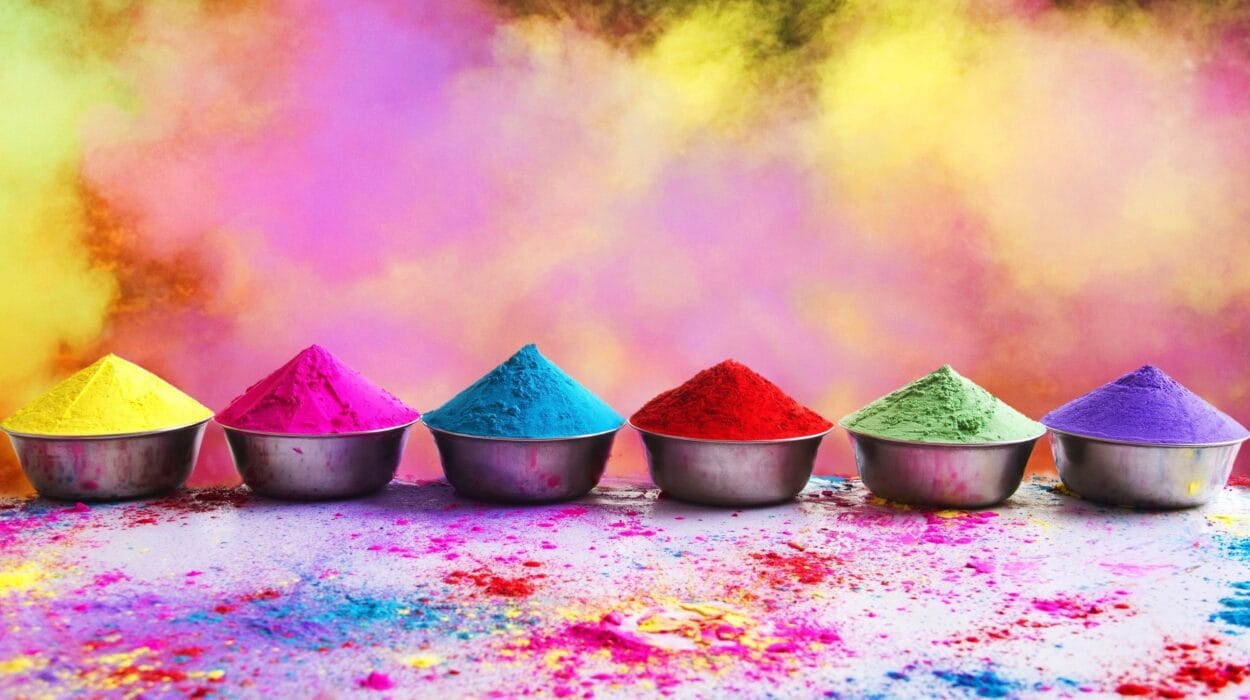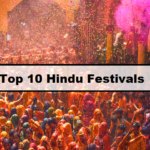Holi is a well-known and joyful festival that is mostly observed by Hindus all over the world. Holi, also known as the “Festival of Colors,” is a Hindu festival that occurs on the full moon day of the Phalguna month, which is usually in February or March. The festival is celebrated with enthusiasm, fervor, and excitement because it commemorates the triumph of good over evil. Holi is a chance to neglect hard feelings, pardon others, and spread love and congruity. During this festival, people play with colors, dance to traditional Holi songs, share snacks and sweets with friends and family, and eat delicious food. How to properly and responsibly celebrate Holi will be the topic of this article.
Tale Behind the Celebration
The Hindu festival of Holi celebrates the triumph of good over evil and has its origins in Hindu mythology. The tale of Holika and Prahlad is the most well-known of the many myths and legends that are associated with the festival.
The legend says that there was a tyrant king named Hiranyakashyap who didn’t believe in God. Instead, he wanted everyone to worship him. However, his father was enraged because his son Prahlad was a devotee of Lord Vishnu. Lord Vishnu always saved Prahlad despite the king’s numerous attempts to kill him.

Holika, the king’s sister, devised a strategy to kill Prahlad using a boon that made her immune to fire. In the hope that she would escape the flames while Prahlad would perish, she tricked Prahlad into sitting on her lap in a pyre. However, the reverse took place. Holika was shattered by fire while Prahlad remained alive.
Holi is celebrated in honor of the story of Holika and Prahlad, which depicts the triumph of good over evil. The bonfire that is lit on the eve of Holi, known as Holika Dahan, is also associated with the burning of Holika.

The playful love story of Lord Krishna and Radha is also associated with Holi. According to legend, Lord Krishna, who was dark in complexion, was envious of Radha’s fair skin. To make Radha look like him, he was instructed by his mother to apply color to her face. Playing with colors became a popular part of Holi celebrations from that point on.
The story of Holi is one in which love triumphs over evil and good triumphs over evil. In order to remember and honor these stories, the festival is celebrated with enthusiasm and fervor.
Preparation
Holi preparation is an essential component of the celebration because it involves preparing everything for the day. When preparing for Holi, consider the following:
Choosing eco-friendly or natural colors: Playing with colors is the whole point of Holi, so it’s important to use natural or eco-friendly colors to keep the environment and your health safe. You can purchase eco-friendly colors made from natural ingredients or natural colors made from flowers like marigold and rose petals.

Home maintenance and decoration: Cleaning and decorating your home in preparation for the festival are essential. Use colorful flowers, balloons, and streamers to decorate your home.
Making traditional treats for Holi: It is customary to prepare traditional Holi delicacies like gujiya, thandai, and puran poli because Holi is a time to indulge in delicious food. These desserts and bites are a fundamental piece of the celebration and are imparted to family, companions, and neighbors.
Purchasing balloons and water guns: Holi can be celebrated in a fun way with water guns and balloons. They are used to splash each other with colored water, which enhances the festive atmosphere.
You can ensure that you have everything you need to fully appreciate Holi by properly preparing for it.
Celebration
Holi is a dynamic and brilliant celebration celebrated with extraordinary energy and fervor from one side of the planet to the other. Holi is celebrated in a variety of ways, including the following:
Praying to the Lord Krishna: The festival begins with a prayer ceremony during which participants offer prayers and ask Lord Krishna for blessings.

Experimenting with hues: Playing with colors is one of the most significant aspects of Holi. The act of smearing each other with colored powder and water is a sign of good winning over evil.
Dancing to the songs of Holi: To celebrate Holi, people dance to the beat of dhol and sing traditional songs.
Sharing treats with friends, family, and neighbors: During the festival of Holi, people share sweets and snacks with their loved ones and neighbors to spread happiness.
Consuming delectable food: People prepare traditional delicacies like gujiya, thandai, and puran poli during Holi, which is also a time to indulge in delicious food.

Using water guns and balloons to celebrate: People use water guns and balloons to spray colored water on each other, which is a fun way to celebrate Holi.
Regarding everybody’s limits and decisions: Respecting each other’s boundaries and choices is essential during Holi. It is essential to respect the wishes of those who do not wish to participate in the festivities.
Holi is a joyful and vibrant celebration of good over evil that brings people together. Spreading love, happiness, and forgiveness is a big part of this time of year, and it’s also a time to enjoy the holiday spirit.
Spreading love and harmony
One of the most important aspects of Holi celebrations is promoting peace and love. The festival is about more than just eating delicious food and playing with colors; it’s also about building relationships and spreading happiness.
Holi is a time to let go of past animosities and begin anew. To move on in life, people bury their differences and seek forgiveness from loved ones. The festival is a time to celebrate diversity and spread love and harmony.

Holi is a festival that brings people of all ages and backgrounds together to celebrate. While sharing sweets and snacks, they dance to the beat of dhol and sing traditional Holi songs. The festival brings people together and bridges the divide between communities and cultures.
Additionally, Holi is an occasion to show compassion and love to the less fortunate. People help those in need by giving food and money to charities. The festival teaches us to show empathy and compassion for other people.
The festival of Holi teaches us to spread peace, joy, and love. It’s a good time to celebrate diversity and improve relationships with those we care about. The festival encourages us to extend our love and care to those who are less fortunate and emphasizes the significance of forgiveness, compassion, and empathy in our lives.
Conclusion
Holi is a celebration of harmony, color, and happiness. It is a celebration of the triumph of love and good over evil. The festival brings people of all backgrounds and ages together to spread joy and love.
Holi is a time to put past animosities behind you and start fresh. We should ask for forgiveness and show others our love and care. We learn to appreciate diversity and respect each person’s choices and boundaries at the festival.
Holi is celebrated worldwide with enthusiasm and excitement. Color play, dancing to traditional Holi songs, and delicious food are all common activities. The festival is a chance to build relationships with loved ones and show compassion and love to those less fortunate.
In a nutshell, Holi is a festival that honors love, unity, and harmony. It helps us to remember the significance of pardoning, sympathy, and compassion in our lives and urges us to spread satisfaction and joy any place we go.
FAQs
What’s Holi?
In India and all over the world, Holi is a well-known Hindu festival that celebrates spring and the triumph of good over evil. The “Festival of Love” and “Festival of Colors” are other names for the event.
When is Holi celebrated?
Holi is a Hindu festival that takes place on the day of the full moon in the Hindu month of Phalguna, which typically falls in late February or early March.
Why is Holi celebrated?
Holi is a festival that marks the triumph of good over evil and the beginning of spring. In addition, the festival is associated with numerous Hindu myths and legends and has religious significance.
How is Holi celebrated?
Playing with colors, water guns, and balloons is how Holi is celebrated. In addition, people celebrate Holi by dancing to traditional songs and eating delicious food and sweets. The festival is a time to build relationships and spread peace and love.
During Holi, what kinds of traditional foods are consumed?
Gujiya, a sweet pastry filled with khoya and dry fruits, thandai, a rehydrating drink made with milk, nuts, and spices, and puran poli, a flatbread filled with sweet lentil filling, are among the traditional dishes served during Holi.
In India, is Holi a public holiday?
Yes, Holi is a national holiday in India, and offices, schools, and colleges are closed on this day.
During the Holi celebrations, are there any safety precautions to be taken?
Taking safety precautions during Holi celebrations is absolutely necessary. People should use colors that are safe for the environment, not drink too much, and respect each other’s boundaries and choices. Protecting your eyes, skin, and hair from dyes and harsh chemicals is also crucial.
Is Holi celebrated outside of India?
Yes, Hindus and non-Hindus alike celebrate Holi, particularly in nations with a significant Indian diaspora. In recent years, the festival has grown in popularity and is celebrated in a number of countries, including Australia, Canada, the United Kingdom, and the United States.







